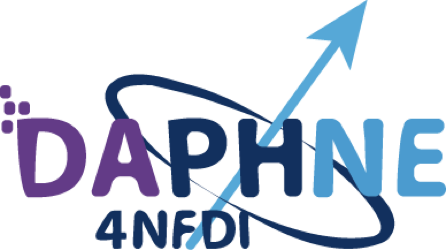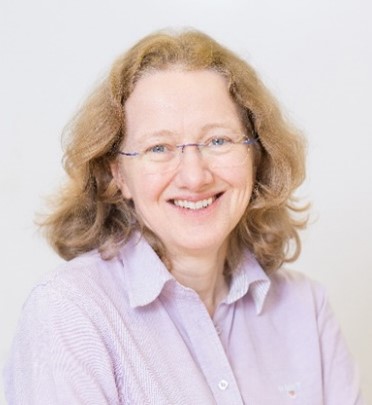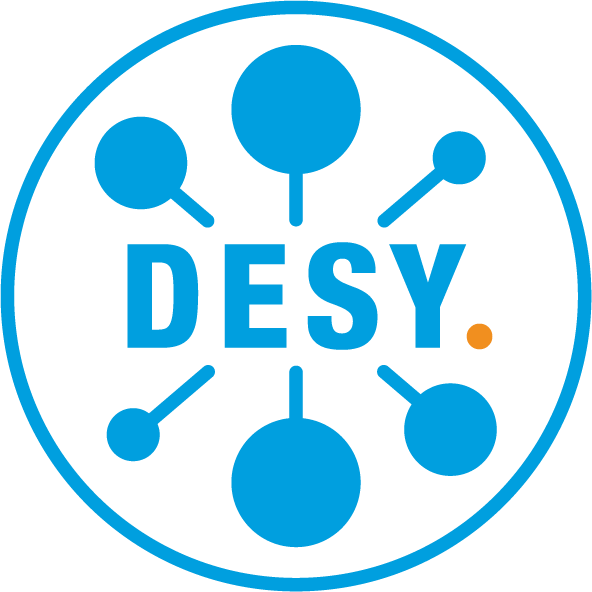
About us
DAPHNE4NFDI (DAta from PHoton and Neutron Experiments) is building an open and FAIR infrastructure for research data management for research with photons at synchrotron light sources and neutrons. This is a diverse field of research, conducted in particular at large-scale research facilities. Photons at synchrotron radiation sources and neutrons allow unique insights into matter and biological, chemical and physical processes. With these, urgently needed techniques that solve society’s problems in a sustainable way can be developed. Research with photons and neutrons covers a very broad spectrum of scientific disciplines. There are more than 5500 scientists working directly in these fields all over Germany. Currently, data volumes of more than 30 petabytes are generated per year – and the trend is rising. The large volume of data poses a number of challenges: The data is often user-specific, a wide variety of software is used for analysis, and data cannot be easily exchanged. The vision of DAPHNE4NFDI is therefore to make the transparency, FAIRness, and reusability of data generated at photon and neutron facilities available to the broader research community. This goes beyond the individual group performing the measurement. In addition, there is a great need for rapid high-level data analysis or the use of reference spectra. The data should also be systematically stored, their quality verified, and thus they should be reusable. In this way, scientific work is made more efficient and an optimum amount of information and knowledge can be obtained from the data.
Goals
The DAPHNE4NFDI consortium aims to leverage the capabilities, tools and infrastructures of digital transformation to develop user-oriented data solutions for scientific experiments in the field of photon and neutron science.
- Improve metadata ingestion, for discoverability and reusability of measured data, including by a broader community of researchers than is currently the case
- Implement searchable curated databases of raw, intermediate, or processed data traceable to published and unpublished results
- Develop curated repositories of managed software developed by leading research groups and accessible to any researcher, making data analysis repeatable and code reusable for other problems
- Develop a multidisciplinary data platform for cross-consortium NFDI actions
- Provide education and training in research data management
Task Areas
TA1: Data acquisition
Improve metadata acquisition through consistent workflows supported by user-controlled online logbooks. These are linked to data collection and enable comprehensive collection of information about experiments.
TA2: (Meta)data and catalogs
Establish a collaborative repository for processed data, new reference databases, and analysis code of published results. The repository is linked to raw data sources to improve access to research data in a sustainable way. It will also facilitate reuse of data and software.
TA3: Infrastructures for reuse of data and software
Create, maintain, and promote analytics software that can be deployed on “cloud-like” services so that ordinary users can replicate and benefit from the work of power users. This makes the analysis of “Big Data” technically simple, reproducible, and sustainable, including the accessibility of machine learning strategies.
TA4: Networking, collaboration, and outreach
Develop a common data policy between users and Big Data research institutions that addresses common needs such as data preservation, archiving standards, and embargo policies. Align data policies and standards, including at the European level, through collaboration with our European partners. Develop and promote efficient data flows and metadata definitions in coordination with other communities and NFDI consortia that enable and promote the reuse of all photon and neutron data in the NFDI.
TA5: Principles, external communication
Raise awareness of FAIR principles and research data management needs in our community, particularly in university curricula.
TA6: Management
Manage and coordinate the financial and organizational aspects of the consortium


PD Dr. Bridget Murphy
Deutsches Elektronen-Synchrontron (DESY)
Speaker of the consortium
(Co-)applicant institutions and (co-)speakers:
(Co-)applicant institutions and (co-)speakers:
-
Dr. Wiebke Lohstroh – Technische Universität München
-
Prof. Dr. Jan-Dierk Grunwaldt & Dr. Frank Weber – Karlsruher Institut für Technologie
-
Dr. Astrid Schneidewind – Forschungszentrum Jülich
-
Prof. Dr. Tobias Unruh – Friedrich-Alexander-Universität Erlangen-Nürnberg
-
Dr. Bridget Murphy – Christian-Albrechts-Universität zu Kiel
-
Prof. Dr. Christian Gutt – Universität Siegen
-
Prof. Dr. Frank Schreiber – Eberhard Karls Universität Tübingen
-
Dr. Sebastian Busch & Dr. Jörg Hammel – Helmholtz-Zentrum hereon
(Mit-)Antragstellende Institutionen:
-
Prof. Dr. Paola Coan – Ludwig-Maximilians-Universität München
-
Dr. Luca Gelisio – European XFEL
-
Dr. Andreas Houben – RWTH Aachen University
-
Prof. Dr. Brigit Kanngießer – Technische Universität Berlin
-
Dr. Thomas Kluge & Dr. Uwe Konrad – Helmholtz-Zentrum Dresden-Rossendorf
-
Prof. Dr. Sarah Köster – Georg-August-Universität Göttingen
-
Prof. Dr. Dirk Lützenkirchen-Hecht – Bergische Universität Wuppertal
-
Dr. Ingo Manke & Heike Görzig – Helmholtz Zentrum Berlin
-
Dr. Thomas Schneider – European Molecular Biology Laboratory (EMBL)
Deutsches Elektronen-Synchrotron (DESY)
Applicant institution
Participating Institutions
- Bundesanstalt für Materialforschung und -prüfung
- Bundeswehr-Universität München
- Deutschen Physikalischen Gesellschaft
- European Spallation Source
- European Synchrotron Radiation Facility
- Hochschule Niederrhein
- Institut Laue-Langevin
- Max-Born-Institut Berlin, TU Berlin
- Max-Planck-Institut für chemische Energiekonversion Mülheim an der Ruhr
- Physikalisch-Technische Bundesanstalt
- RheinAhrCampus Remagen
- Ruhr-Universität Bochum
- Technische Hochschule Lübeck
- Technische Universität Braunschweig
- Technische Universität Dresden
- TIB – Leibniz-Informationszentrum Technik und Naturwissenschaften und Universitätsbibliothek
- Universität Augsburg
- Universität Bayreuth
- Universität Bielefeld
- Universität Freiburg
- Universität Koblenz-Landau
- Universität Paderborn
- Universität Potsdam
- Universität Regensburg
- Universität Würzburg
- Universität zu Köln

PD Dr. Bridget Murphy
Deutsches Elektronen-Synchrontron (DESY)
Speaker of the consortium

Deutsches Elektronen-Synchrotron (DESY)
Applicant institution
(Co-)applicant institutions and (co-)speakers:
(Co-)applicant institutions and (co-)speakers:
-
Dr. Wiebke Lohstroh – Technische Universität München
-
Prof. Dr. Jan-Dierk Grunwaldt & Dr. Frank Weber – Karlsruher Institut für Technologie
-
Dr. Astrid Schneidewind – Forschungszentrum Jülich
-
Prof. Dr. Tobias Unruh – Friedrich-Alexander-Universität Erlangen-Nürnberg
-
Dr. Bridget Murphy – Christian-Albrechts-Universität zu Kiel
-
Prof. Dr. Christian Gutt – Universität Siegen
-
Prof. Dr. Frank Schreiber – Eberhard Karls Universität Tübingen
-
Dr. Sebastian Busch & Dr. Jörg Hammel – Helmholtz-Zentrum hereon
(Mit-)Antragstellende Institutionen:
-
Prof. Dr. Paola Coan – Ludwig-Maximilians-Universität München
-
Dr. Luca Gelisio – European XFEL
-
Dr. Andreas Houben – RWTH Aachen University
-
Prof. Dr. Brigit Kanngießer – Technische Universität Berlin
-
Dr. Thomas Kluge & Dr. Uwe Konrad – Helmholtz-Zentrum Dresden-Rossendorf
-
Prof. Dr. Sarah Köster – Georg-August-Universität Göttingen
-
Prof. Dr. Dirk Lützenkirchen-Hecht – Bergische Universität Wuppertal
-
Dr. Ingo Manke & Heike Görzig – Helmholtz Zentrum Berlin
-
Dr. Thomas Schneider – European Molecular Biology Laboratory (EMBL)
Participating Institutions
- Bundesanstalt für Materialforschung und -prüfung
- Bundeswehr-Universität München
- Deutschen Physikalischen Gesellschaft
- European Spallation Source
- European Synchrotron Radiation Facility
- Hochschule Niederrhein
- Institut Laue-Langevin
- Max-Born-Institut Berlin, TU Berlin
- Max-Planck-Institut für chemische Energiekonversion Mülheim an der Ruhr
- Physikalisch-Technische Bundesanstalt
- RheinAhrCampus Remagen
- Ruhr-Universität Bochum
- Technische Hochschule Lübeck
- Technische Universität Braunschweig
- Technische Universität Dresden
- TIB – Leibniz-Informationszentrum Technik und Naturwissenschaften und Universitätsbibliothek
- Universität Augsburg
- Universität Bayreuth
- Universität Bielefeld
- Universität Freiburg
- Universität Koblenz-Landau
- Universität Paderborn
- Universität Potsdam
- Universität Regensburg
- Universität Würzburg
- Universität zu Köln